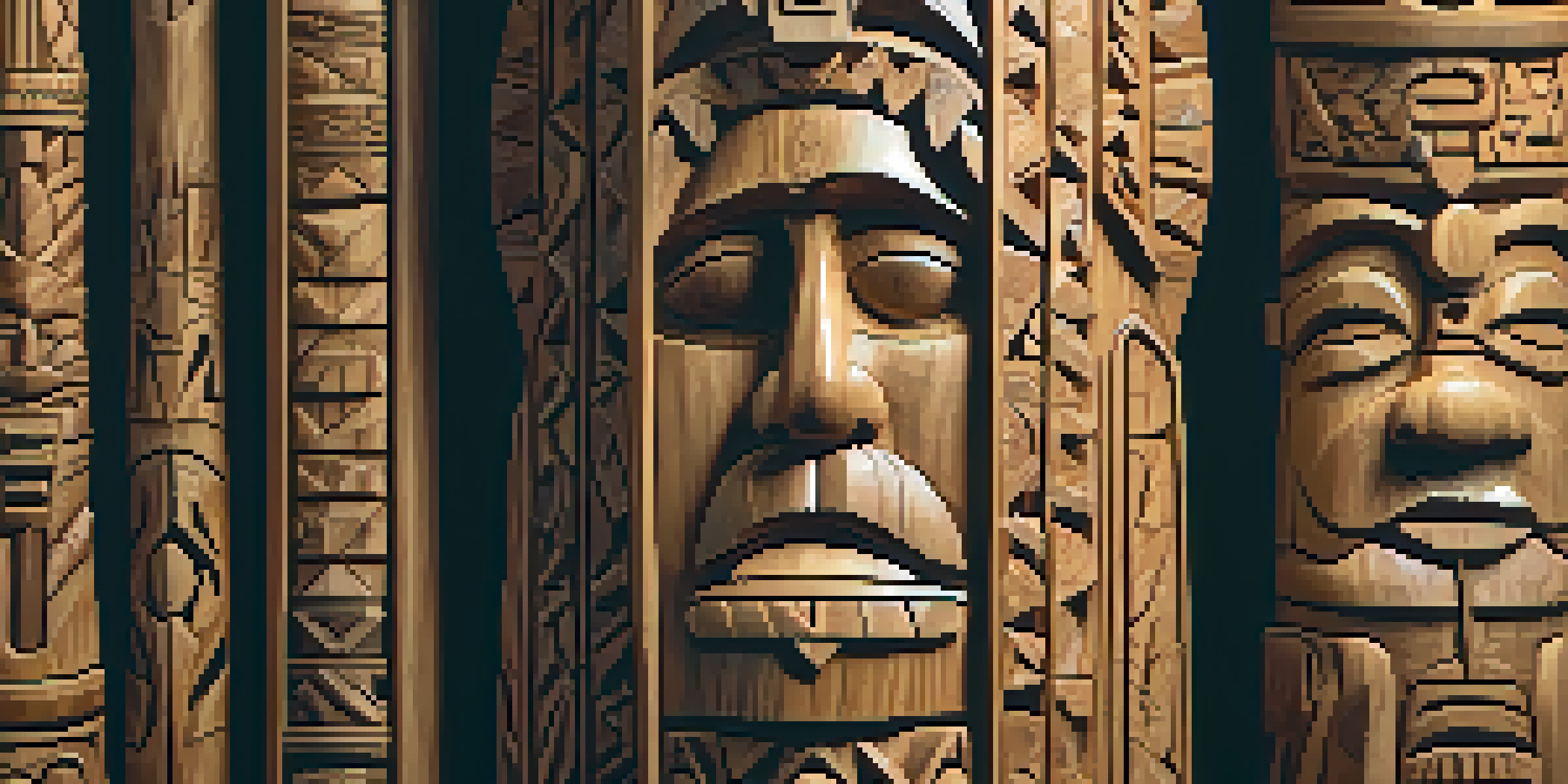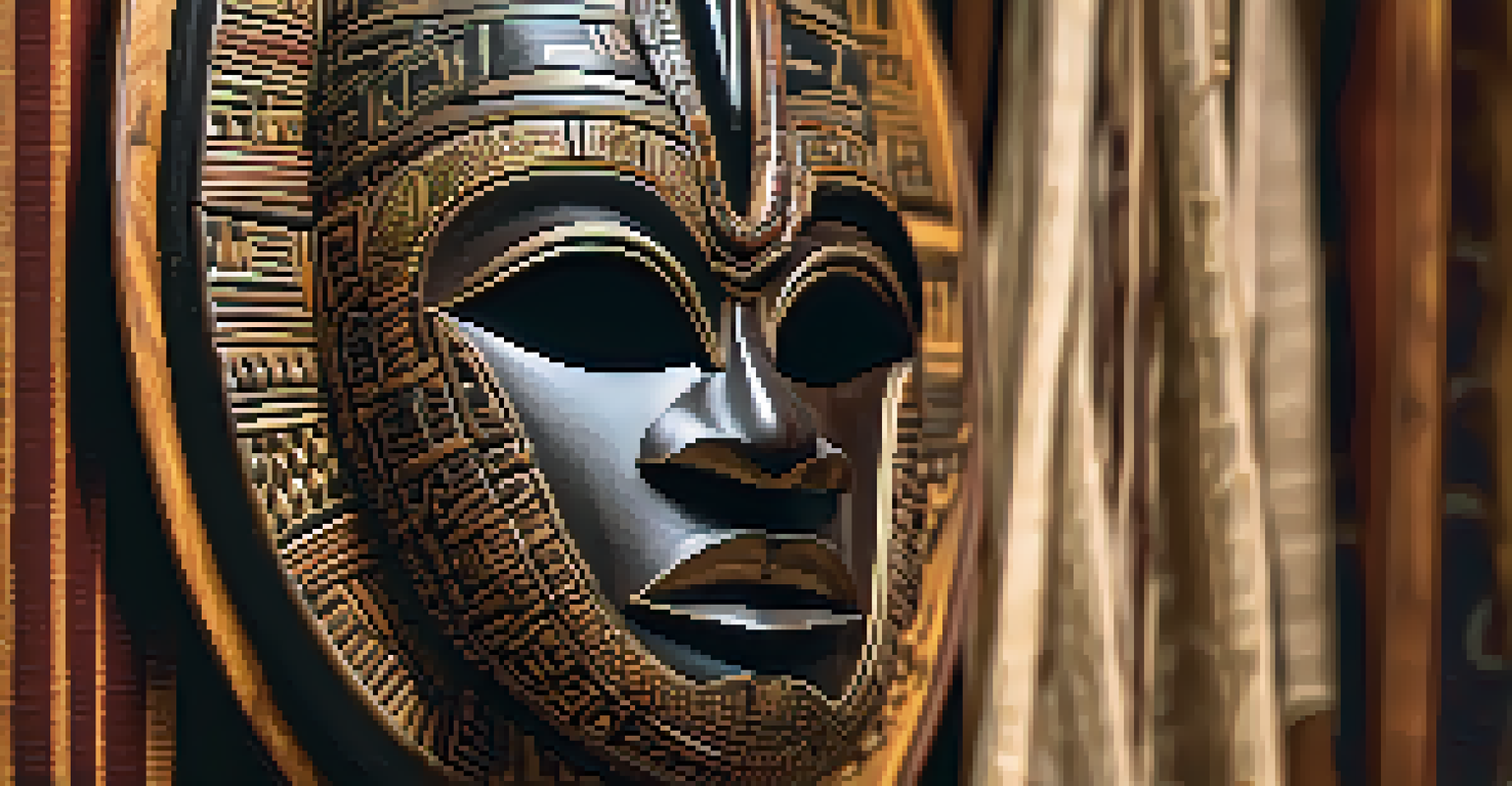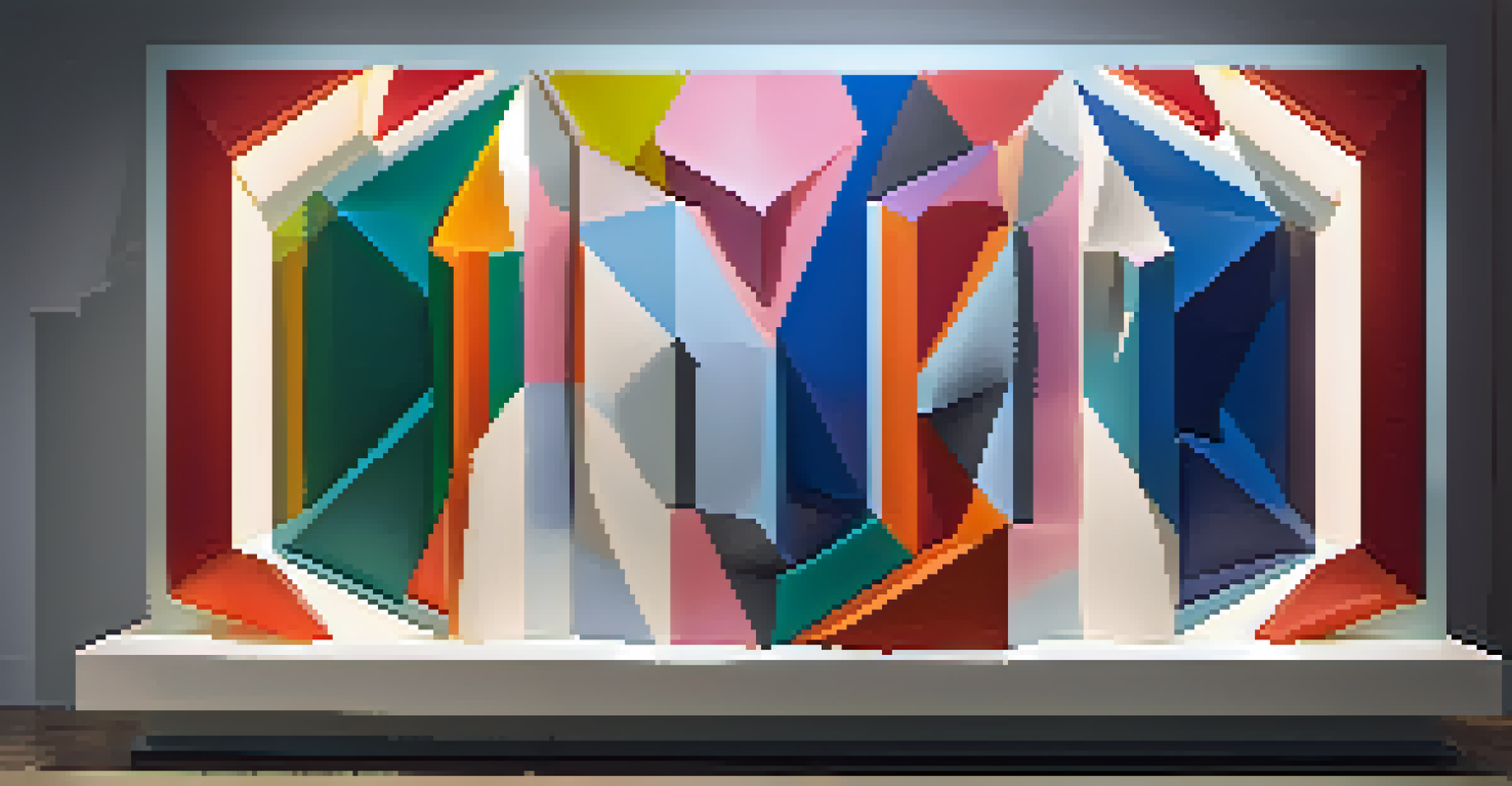Artistic Carving: A Pathway to Understanding Cultures

Understanding Artistic Carving as a Cultural Expression
Artistic carving is more than just a craft; it's a profound way to express cultural identity. Every chisel mark and curve tells a story of traditions, beliefs, and history. Different cultures use carving to represent their unique values, showcasing their artistry and heritage through materials like wood, stone, and bone.
Art is the most beautiful of all lies; it is a reflection of the culture that creates it.
For instance, the intricate designs found in African masks often symbolize spiritual beliefs and community values. Similarly, Native American totem poles narrate ancestral stories and reflect the connection to nature. These carvings serve as a visual language, bridging the gap between generations and offering insight into the ways of life of various societies.
By engaging with these artistic forms, we can gain a deeper understanding of the cultures they originate from. This exploration invites us to appreciate the craftsmanship involved and recognize the shared human experience represented through carving.
The Tools and Techniques of Artistic Carving
Artistic carving requires a combination of skill, patience, and the right tools. Artisans typically use chisels, knives, and gouges to bring their visions to life, each tool serving a specific purpose in the carving process. For example, a gouge is used to create deep cuts, while a knife might be employed for finer details.

Techniques vary widely across cultures; some artisans may use the subtractive method, where material is removed to reveal the design, while others might employ relief carving, leaving some of the background intact. This diversity in approach not only enriches the artwork but also highlights the unique styles and traditions tied to different cultures.
Cultural Identity Through Carving
Artistic carving serves as a profound expression of cultural identity, reflecting traditions, beliefs, and history through intricate designs.
Learning about these tools and techniques can deepen our appreciation for the artistry involved. It reminds us that behind each piece is a craftsman with a story, dedication, and a desire to keep their cultural narrative alive.
Symbolism in Artistic Carving Across Cultures
Symbolism plays a crucial role in artistic carving, where specific shapes and figures convey deeper meanings. For example, in many Asian cultures, dragons symbolize power and strength, while in Celtic carving, knots often represent the interconnectedness of life. This use of symbolism provides a rich layer of context to the artwork.
The greatest artists are those who can capture the essence of their culture in their work.
Each culture has its set of symbols that resonate with its people, often reflecting their values, beliefs, and historical experiences. Understanding these symbols can significantly enhance our interpretation of the artwork, allowing us to see beyond the surface and appreciate the cultural significance embedded within.
As we explore different carvings, we discover a world of meanings waiting to be unlocked. This journey into symbolism fosters a greater respect for cultural diversity and encourages conversations about the stories behind the artwork.
Artistic Carving as a Means of Cultural Preservation
Artistic carving serves as a vital tool for preserving cultural heritage. In a rapidly changing world, where modernization can threaten traditional practices, carving keeps these customs alive, often passed down through generations. This not only preserves techniques but also the stories and meanings behind the art.
Many communities actively engage in carving to maintain their cultural identity, teaching younger generations the significance of their craft. For instance, in some Indigenous cultures, carving is integral to storytelling, where each piece represents a chapter of their history. This educational aspect plays a crucial role in ensuring that these traditions are not forgotten.
Symbolism Enhances Artistic Context
The use of symbolism in artistic carving offers deeper meanings, allowing viewers to appreciate the cultural significance embedded within the artwork.
By valuing artistic carving, we contribute to the preservation of diverse cultures. It encourages us to support artisans and their crafts, helping to sustain their livelihoods and the cultural narratives they represent.
The Role of Artistic Carving in Modern Art
In contemporary art, traditional carving techniques are being reinterpreted and adapted, creating a fascinating dialogue between the past and the present. Artists often blend modern themes with traditional methods, resulting in unique pieces that challenge our perceptions of culture and art. This fusion allows for a vibrant exploration of identity in today's globalized world.
For instance, some artists incorporate elements of pop culture into their carvings, making statements about society while paying homage to their roots. This evolution not only keeps the art form relevant but also opens up conversations about cultural appropriation and authenticity.
By examining these modern interpretations, we can appreciate how artistic carving continues to evolve. It reflects the dynamic nature of culture, showcasing resilience and adaptability while honoring tradition.
Engaging with Artistic Carving: Museums and Exhibitions
Museums and exhibitions play a pivotal role in showcasing artistic carving from various cultures around the world. They provide a space for artists to display their work and for visitors to engage with diverse cultural narratives. Exhibits often feature detailed descriptions that enhance our understanding of the pieces on display, connecting us to their origins.
Visiting these exhibitions is an excellent way to experience the beauty of carving firsthand. Many museums also host workshops where visitors can learn about carving techniques, giving them an opportunity to appreciate the skill involved. This hands-on experience fosters a deeper connection to the art form and its cultural significance.
Preservation of Heritage and Traditions
Artistic carving plays a vital role in preserving cultural heritage by passing down techniques and stories through generations.
By supporting museums and attending exhibitions, we help promote the importance of cultural heritage and artistic expression. It's a way to celebrate diversity and encourage ongoing dialogue about the stories that shape our world.
The Future of Artistic Carving in a Globalized World
As the world becomes increasingly interconnected, the future of artistic carving is both exciting and challenging. Globalization offers opportunities for artists to share their work with a wider audience, fostering cross-cultural collaborations that can enrich the art form. However, it also raises concerns about the dilution of traditional techniques and the risk of cultural appropriation.
To navigate this landscape, it is essential for artists and consumers to engage in respectful dialogue about cultural representation. Supporting local artisans and understanding the context of their work can help preserve the integrity of their craft while allowing it to evolve. This balance is crucial for ensuring that artistic carving remains a vibrant and meaningful expression of culture.

Looking ahead, artistic carving will likely continue to adapt, reflecting the complexities of our global society. By embracing these changes while honoring tradition, we can ensure that this beautiful art form thrives for generations to come.